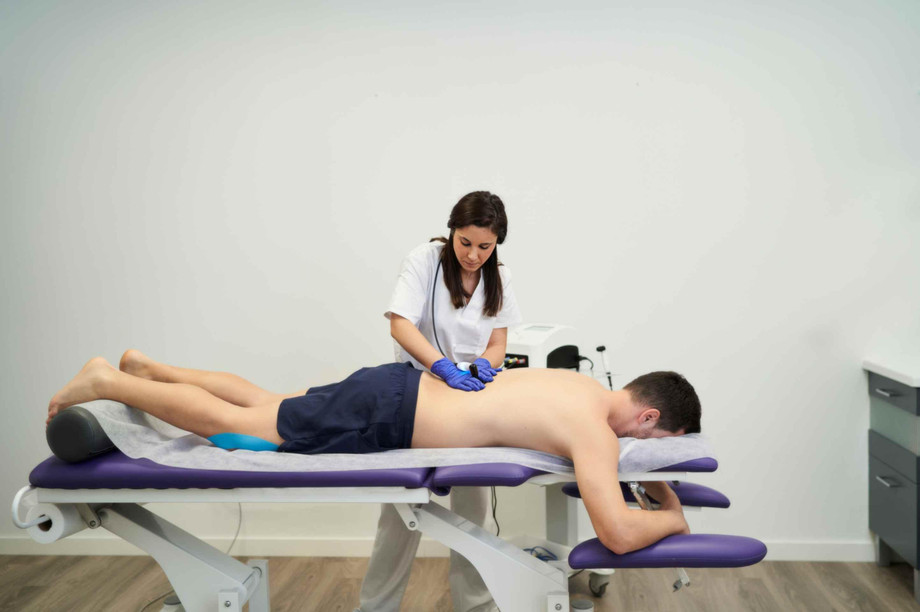Back pain is a common issue affecting millions of Americans, whether caused by poor posture, injury, or underlying medical conditions. Among the latest non-surgical solutions, PRP (Platelet-Rich Plasma) therapy is gaining attention for its potential to alleviate back pain naturally. This blog answers the most frequently asked questions about PRP therapy, helping you decide if it might be the right option for you.
What Is PRP Therapy?
PRP therapy is a regenerative medicine technique that uses your body’s natural healing capabilities. It involves drawing a small amount of your blood, processing it to concentrate platelets and growth factors, and then injecting it into the affected area of your back. These growth factors stimulate tissue repair and reduce inflammation, promoting long-term healing rather than just masking pain.
How Does PRP Therapy Work for Back Pain?
When injected into the damaged area, PRP accelerates your body's natural healing processes. It can target various causes of back pain, such as:
- Herniated Discs: By promoting the repair of torn or inflamed disc tissue.
- Facet Joint Pain: Helping reduce inflammation in the small joints of the spine.
- Muscle and Ligament Strains: Supporting tissue regeneration to restore strength and flexibility.
PRP therapy addresses the root cause of pain, unlike medications that provide temporary relief.
Is PRP Therapy Safe?
Yes, PRP therapy is considered safe for most people because it uses your own blood. This reduces the possibility of infections or allergic responses. However, it’s important to choose a qualified medical professional to ensure proper procedure and safety.
Who Is a Good Candidate for PRP Therapy?
PRP therapy is suitable for individuals experiencing mild to moderate back pain that hasn’t responded well to conventional treatments like physical therapy, medications, or rest. It’s also a great option for people who want to avoid surgery or long-term medication use.
However, it may not be recommended for individuals with the following conditions:
- Active infections
- Blood disorders
- Cancer
- Severe spinal damage requiring surgery
A consultation with your doctor will help determine if PRP therapy is right for you.
What Can I Expect During the Procedure?
The PRP therapy process is straightforward:
- Blood Draw: A small amount of your blood is collected, similar to a routine blood test.
- Platelet Preparation: The blood is placed in a centrifuge to separate platelets and growth factors from other components.
- Injection: The PRP solution is injected directly into the area of pain, often guided by imaging technology for precision.
The entire procedure typically takes about 1-2 hours, and most people can go home the same day.
Does PRP Therapy Hurt?
The procedure is generally well-tolerated. You may feel mild discomfort at the injection site, but it’s significantly less painful compared to surgery or other invasive treatments. To reduce discomfort, your doctor could administer a local anesthetic.
How Long Does It Take to See Results?
PRP therapy is not an instant fix, as it focuses on healing rather than immediate symptom relief. Most patients begin to notice improvement within 4-6 weeks, with optimal results often seen after 2-3 months. Depending on how severe their disease is, some people can need more than one session.
What Are the Benefits of PRP Therapy for Back Pain?
PRP therapy offers several advantages:
- Natural Healing: Utilizes your own blood to repair tissues.
- Non-Invasive: Avoids the risks and downtime associated with surgery.
- Minimal Side Effects: Fewer complications compared to other treatments.
- Long-Term Relief: Treats the root cause of pain rather than just symptoms.
These benefits make PRP therapy an attractive option for those seeking a holistic approach to back pain management.
What Are the Risks or Side Effects?
Despite PRP therapy's general safety, certain patients might encounter:
- Temporary swelling or redness at the injection site
- Mild pain or stiffness
- Rare instances of infection
Choosing an experienced provider and following post-procedure instructions can minimize these risks.
How Do I Choose a PRP Therapy Provider?
Selecting the right provider is crucial for a successful outcome. Here are a few tips:
- Credentials: Ensure the provider is licensed and experienced in administering PRP therapy.
- Specialization: Look for clinics that focus on pain management or regenerative medicine.
- Reviews: Check patient testimonials and online reviews.
- Consultation: To talk about your condition and treatment strategy, schedule a consultation.
Conclusion
For those with back pain, PRP therapy is a potentially effective treatment option. By harnessing the body’s natural healing power, it offers a non-invasive, long-term solution that can improve quality of life.
If you’re considering PRP injections for back pain, consult a qualified medical professional to explore your options and create a personalized treatment plan. Read more about PRP Therapy for Back Pain.
Click here for another blog.

